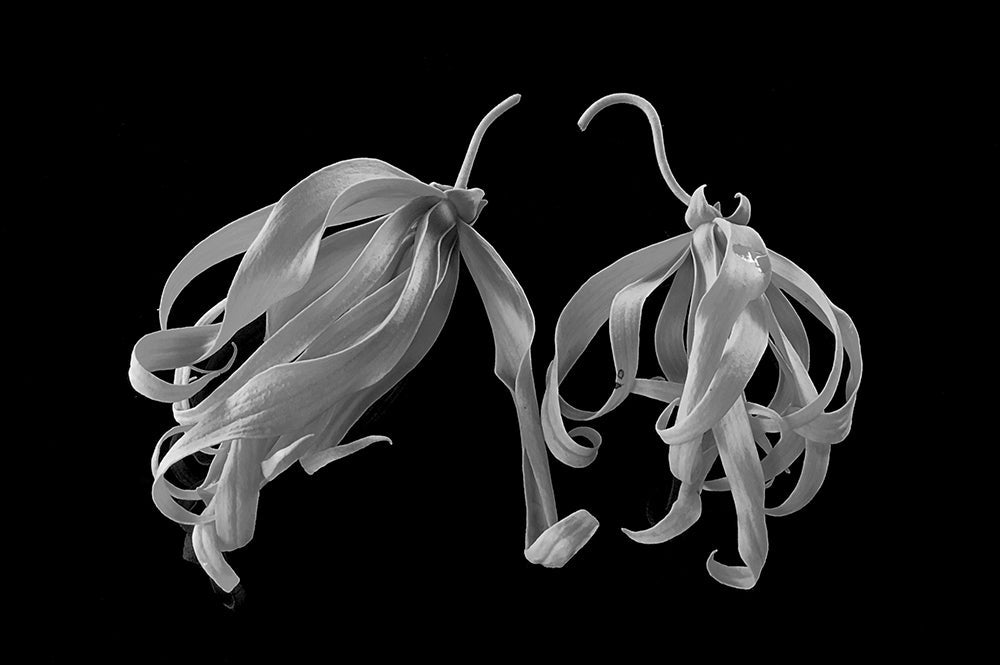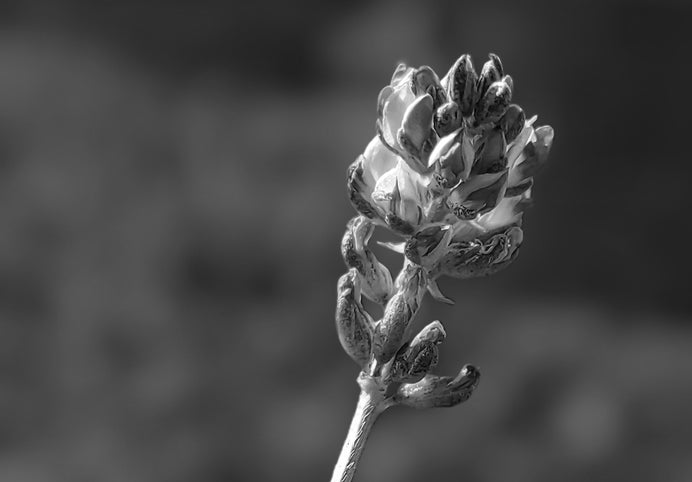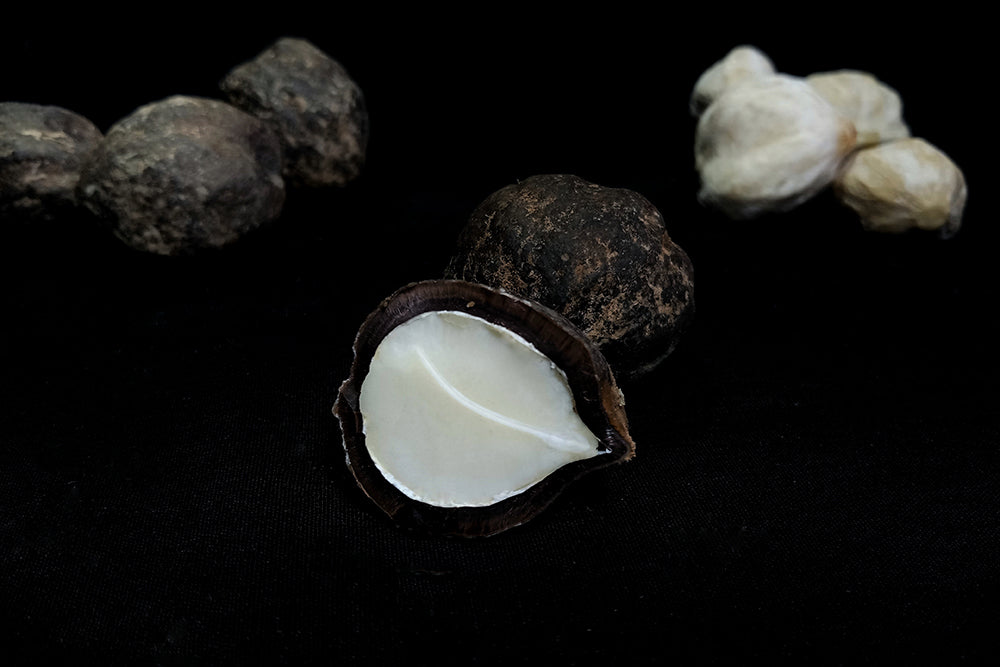
ingredient focus: ylang ylang

the bottom line
Ylang ylang is different. Unlike most other essential oils, ylang ylang has varying grades that are produced by different methods, each of which in turn is suited for a different purpose. The result: it's incredibly confusing when trying to find the best ylang ylang essential oil for your skin type.
So what method constitutes the best ylang ylang oil? Distilled? Extracted? Absolute? To make it even more confusing, there are different grades of ylang ylang, as well as wildly varying prices. Have no fear, beauty – we’ve made the sourcing process easier for you by breaking down the terminology to guide you towards the best ylang ylang oil. Read (and sniff) onwards.
first layer: what is ylang ylang?
It’s more than just a “poor man’s jasmine” – ylang ylang is a beautifully complex essential oil with multiple personalities that come through as the scent gently evaporates. Ylang ylang oil has its origins in the freshly picked flowers of the ylang ylang tree, a tropical tree native to Indonesia, Malaysia, and the Philippines. The name “ylang ylang” is believed to be derived from the Tagalog word “ilang-ilang”, which translates as “wilderness”.
The quality of ylang ylang oil is highly influenced by not only the harvesting methods of the ylang ylang flowers, but even by the time of day that they are picked. Flowers collected in the early morning are believed to produce the most beneficial oil since the flowers are pollinated by moths at night. The drop in temperature and humidity that occurs at night is also believed to affect the chemical structure of the oil and indeed, the most intense fragrance is released between sunset and sunrise.
second layer: extractions and fractions
Ylang ylang oil is particularly unique in that it is produced by fractional distillation, which is performed by repeatedly halting distillation at specific times or densities and collecting the volatiles or fractions separately at each stage. The oil is thus “graded” according to the stage at which the distillate was obtained. In general, higher grades translate to a more intense essential oil with a higher price.
ylang ylang extra:
The “extra” fraction is the first of the four fractional distillates separated out and has the lightest volatiles. This layer is intensely sweet and floral and is typically reserved for luxury fragrances in the perfume industry.
ylang ylang I:
This medium-density fraction is a cosmetic-grade essential oil which is suitable for skincare products as well as therapeutic uses. Although it is still intensely sweet, it has a less floral aroma than the extra fraction.
ylang ylang II:
Another medium-density fraction, this is also a high-grade cosmetic-grade essential oil which is less intense, more floral, and spicier than ylang ylang I. It provides a deeper note to the scent. In addition to skincare, ylang ylang II can be found in shampoos, bath oils, and shower gels.
ylang ylang III:
This the heaviest fraction and is used to fragrance soaps, candles, and incense. It is less expensive than the other fractions and has a deeper and woodier aroma.
ylang ylang complete:
This fraction is the result of continuous distillation for up to 18 hours, which provides a full spectrum, non-fractionated oil. This is the ideal choice for use in aromatherapy applications. It’s not, as its name might imply, simply the combination of the other fractions.
third layer: ylang ylang for your skin and hair
Ready to explore the benefits of ylang ylang oil for skin and hair? Here are our recommendations:
normal/combination skin:
Consider ylang ylang I or II, which has a gorgeous fragrance. It’s considered to be the ideal distillation for facial creams.
dry/mature skin:
A study examining effects on melanogenesis* found that several compounds isolated from the ylang ylang flower can inhibit the production of melanin which is associated with age-related pigmentation. Ylang ylang has potent anti-inflammatory and antioxidant* activity which is a key component in the prevention and reduction of fine lines and wrinkles.
oily/acne-prone skin:
As an anti-microbial, ylang ylang has demonstrated activity against the bacteriae Propionibacterium acnes and Klebsiella species and shows anti-fungal activity against Candida albicans.
sensitive skin/inflammatory skin conditions:
Ylang ylang III may be a better fit for you, as the scent is milder and less potentially irritating. The anti-inflammatory and antioxidant* activity of the oil will still be of benefit in these skin types.
the hair:
Ylang ylang II oil is suitable for use in oil-balancing shampoos. It’s been shown to assist in the treatment of conditions such as head lice.
fourth layer: ylang ylang for your mind and soul
Ylang ylang complete essential oil is the ideal companion for helping to relieve minor ailments including menstrual cramps and joint pain when a few drops are blended into a carrier oil and used for massage. In aromatherapy, it is believed to be effective in helping to reduce blood pressure, relieve headaches, and easing anxiety and depression. Finally, ylang ylang is believed to act as an aphrodisiac
fifth layer: how we do it
It’s no secret that we adore ylang ylang oil for skin. We use less the intense but still wonderfully fragrant ylang ylang II essential oil in our lotus & lychee facial creme, a light yet highly moisturizing cream that includes lotus flower, lychee fruit, plum, and elderberry extracts.
Remember to never use an essential straight on the skin. Always use a carrier oil (such as almond or sunflower oil) to dilute the oil to 1% or less to avoid skin irritation.
references:
- https://www.edenbotanicals.com/ylang-ylang-aroma-family
- https://en.wikipedia.org/wiki/Cananga_odorata
- Green, M. Natural Perfumes - Simple Aromatherapy Recipes. (1999) Interweave Press, Loveland, CO.
- Mojay, G. Aromatherapy for Healing the Spirit. (1996) Henry Holt & Co., New York.
- Tisserand, R. Aromatherapy: To Heal and Tend the Body. (1988) Lotus Press.
- Guenther, E. The Essential Oils, Vol. V. (1985) Jepson Press.
*definitions:
antioxidant: an antioxidant is a compound that inhibits oxidation. free radicals create oxidative stress and an inflammatory response which in turn can damage DNA and result in injury to the epidermal and dermal layers of the skin. in the skin, this manifests as premature aging with decreased elasticity leading to increased wrinkling, age spots, and decreased skin tone. antioxidants stabilize free radicals, which in turn limits their ability to damage the body.
melanogensis: melanogenesis is the process for the production of melanin, the primary source of pigmentation in the skin.
need more beauty definitions? visit the glossary.
faq's:
what is ylang ylang?
ylang ylang oil has its origins in the freshly picked flowers of the ylang ylang tree, a tropical tree native to Indonesia, Malaysia, and the Philippines. the name “ylang ylang” is believed to be derived from the Tagalog word “ilang-ilang”, which translates as “wilderness”.
what is ylang ylang essential oil good for?
ylang ylang can be used to scent skincare, haircare, and body care oroducts. it also has anti-inflammatory and antioxidant properties.
what is the scent of ylang ylang?
depending on the type of distillation, ylang ylang varies from sweet and floral to spicy and intense.



1 comment
This article not only highlights the virtues of ylang ylang essential oil for skin but also guides readers in making wise purchasing decisions. An excellent combination of information and practical advice.
Thank you.
VINEVIDA
leave us a comment
This site is protected by hCaptcha and the hCaptcha Privacy Policy and Terms of Service apply.